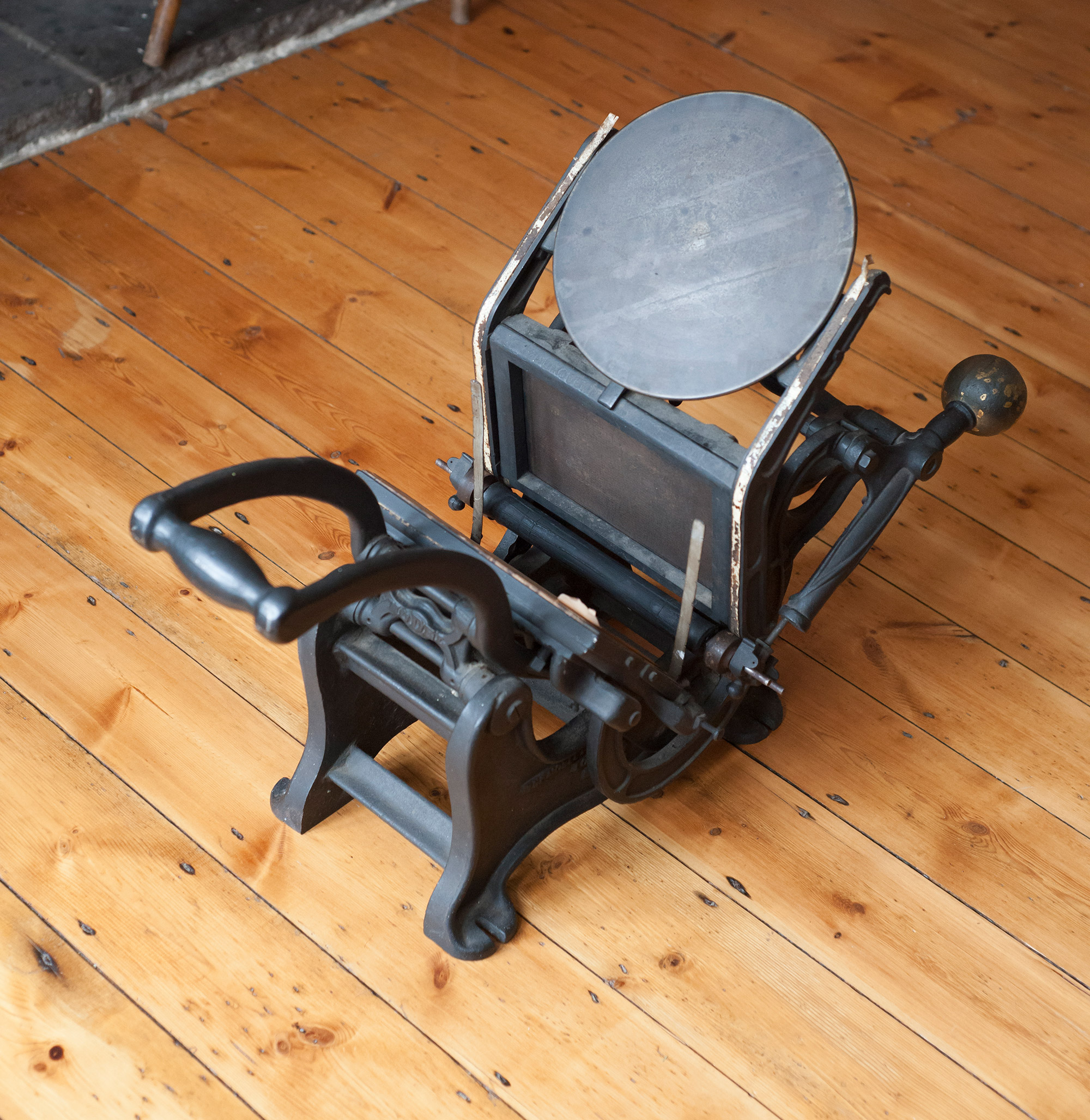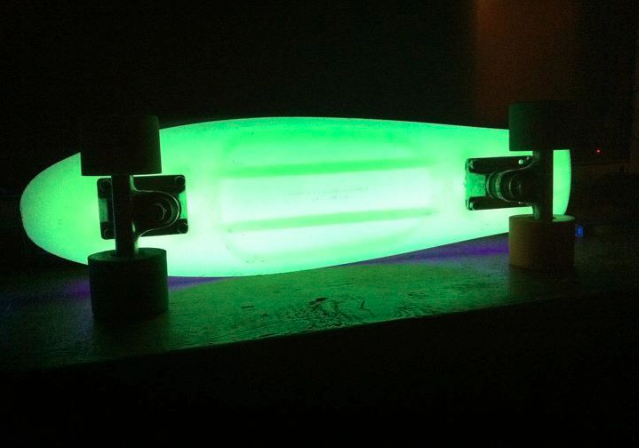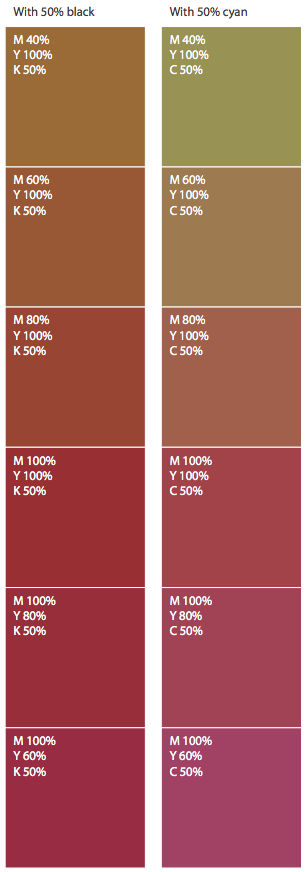Prints Charming: letterpress meets DTP
I got a new printer the other day. It was unexpectedly heavy – it took two of us to carry it from the car – and it isn’t the fastest of devices by any means. When I say ‘new’ I mean new to me, as really it’s rather old; as far as I can tell, it’s clocked up at least a century. So no, it’s not laser or inkjet – it’s a table-top letterpress machine, a marvel of cast iron and Victorian reciprocating mechanical movements. Well, I say table-top, but at 148Ib (67kg), it’s heavy enough to flatten anything that’s not extraordinarily sturdy. It also explains why the previous owners had come to the point where they were glad to see it go.
What I’m talking about is a Model Printing Press No3. This was a very successful letterpress printer design, first made in 1877, the forerunner to the popular Adana press that was designed a few decades later in the 1920s. In the 19th Century, the Model Printing Press company used the phrase ‘Everyone his own printer’ in their advertising, which reflects how this press helped make printing much more accessible. It wasn’t really aimed at hobbyists, but it was pushed out to a broad audience and marketed as being ‘instructive, amusing, interesting’, and so easy that it ‘can be worked by a child of ten’. It was, in fact, the Victorian equivalent of desktop publishing, approximately 100 years before the Mac showed its face.

Like so many other printers of the time, William Caslon took a fairly po-faced attitude to non-professional printing, although he didn’t actually speak directly against it. He said: ‘We are not among those who are alarmed at the increase in amateur printing in this country, although we will not encourage it.‘ This antipathy is hardly surprising, as it’s the kind of attitude we’ve seen over and over: in design and print in the 1980s with the birth of the Mac and DTP; in photography over the last ten years as digital cameras matured; and in the code versus visual design arguments in web development from the late 1990s onwards.
Look back rather than forwards and you’ll see similar issues caused by Gutenberg’s invention of the movable-type printing press. Not all monk-scribes were all that enthusiastic about his device. It seems every shift and advance in technology provokes people to reject or resist in some way. Caslon would probably be horrified to see how far this amateurisation of printing has gone, but I like to think he’d get over it.
Getting back to my particular No3 press, it’s fun to speculate idly on what it might have printed over the last 100 years or so. Political pamphlets urging revolution, perhaps? Learned academic documents that have helped shape scientific under-standing? Those iconic ‘your country needs you’ propaganda sheets of the two World Wars? The truth is almost certainly far more mundane: price lists, ephemeral advertising leaflets, disposable notices, that sort of thing. But it’s still a wonderfully tactile, kinesthetic process.
The No3 press has a ‘chase size’ of 6 x 9 inches (the chase is the frame in which the wood or metal type is set), so that’s the maximum area that can be printed; somewhere between A5 and A4. It’s hand-driven: when you lift the large handle, the platen is tipped away from the type so paper can be taken out and another sheet put in, and at the same time the ink rollers come down from the ink disc to apply ink to the surface of the type. Pull the handle down again and the rollers lift up while the platen closes like a clam-shell or a book, pressing the paper against the newly inked type. Repeat, repeat, repeat.
The printer I have is in almost perfect working condition, with only the ink rollers needing attention. It looks like these weren’t cleaned the last time something was printed, and the rubber cylinders are somewhat perished. Some colleagues are helping me track down somewhere that can remake these, so I hope to be over this hurdle in the next few weeks. The letterpress department at London College of Communication, where I teach, should be able to advise on ink supplies, which leaves just the paper to think about.
It’s important to use the right kind of paper to get the best results from a letterpress. This printing tech can cope with the kind of substrate that would jam a modern inkjet or laser in seconds, but output looks best with something that has a bit of give, just a little softer and thicker than your average copy paper stock. This means the surface of whatever’s being printed retains a slight dent, a subtle tactile deboss (reverse emboss) in the paper.
You may notice this in second-hand books of a certain vintage; run your finger over a page and feel the slight indents, then hold it at a sharp angle to the light and you may be able to see it, too. Using a paper stock that can take a physical impression makes the most of the process and helps to ensure the final prints stand out from the mass of laser, inkjet and litho printing we see every day. It also makes up for any slight difference in height in the metal or wood type being printed, so the print looks relatively even across the whole page.

I already have a certain amount of wood letters and some metal type, too. It won’t be enough, really, so if anyone has some old letterpress type that needs a good home, get in touch! But I do have a cunning plan for dealing with this limitation by creating my own physical type. Not in the way you think… I’m going to use a 3D printer to create ready-made 6 x 9in artwork blocks, able to slot straight into this printer’s metal chase.
The ABS plastic won’t be as durable as metal or even wooden type, but if it works, this means I’ll be able to produce letterpress-friendly layouts with type and graphics and possibly even crude halftones, although I won’t expect too much from that. The workflow I’ll be trying is exporting a page layout to EPS, opening that in Illustrator, converting type to shapes and adding anchor points to all paths, simplifying the paths with straight lines, then exporting as DXF and opening this in Google SketchUp. From there it will be (I hope) a matter of extruding to the right height, tweaking and printing to the 21st Century Makerbot 3D printer that I know is in the building somewhere, and finally locking the 3D output into the 19th century Model Printing Press No3 and cranking out my steampunk-built prints.
A simple workflow? No. But it’ll be worth it to end up with a custom hand-struck letterpress print, complete with digital typesetting and artwork. As a research project dealing with the forced crossover of dramatically disparate technologies, it’ll also keep me busy for a while. As if I needed that!







